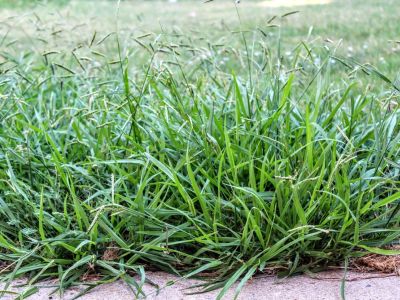USDA Zone 9 includes areas in Florida, Louisiana, Texas, Arizona, California, and even coastal Oregon. It includes both dry and wet regions and coastal and inland areas. Due to this geographic diversity, quite a large number of weed species can show up in zone 9 gardens. Consulting your state’s extension service or their website can be very helpful when you are trying to identify an unknown weed.
Common Groups of Weeds That Grow in Zone 9
Identifying zone 9 weeds involves first learning how to recognize the major categories they fall under. Broadleaf and grass weeds are the two largest categories of weeds. Sedges are also common zone 9 weeds, especially in wetland and coastal regions. Grasses are members of the plant family Poaceae. Weedy examples in zone 9 include:
Goosegrass Crabgrass Dallisgrass Quackgrass Annual bluegrass
Sedges look similar to grasses, but they actually belong to a related group of plants, the Cyperaceae family. Nutsedge, globe sedge, kyllinga sedge, and annual sedge are common weedy species. Sedges typically grow in clumps and can spread by underground tubers or by seeds. They have an appearance similar to coarse grasses, but their stems have a triangular cross-section with firm ridges at the corners. You’ll be able to feel those ridges if you run your fingers over a sedge stem. Just remember the botanist’s saying: “sedges have edges.” Both grasses and sedges are monocots, meaning they are members of a related group of plants that emerge as seedlings with only one cotyledon (seed leaf). Broadleaf weeds, on the other hand, are dicots, meaning that when a seedling emerges it has two seed leaves. Compare a grass seedling with a bean seedling, and the difference will be clear. Common broadleaf weeds in zone 9 include:
Bull thistle Pigweed Morning glory Florida pusley Beggarweed Matchweed
Eradicating Weeds in Zone 9
Once you know whether your weed is a grass, a sedge, or a broadleaf plant, you can choose a control method. Many grassy weeds that grow in zone 9 produce underground rhizomes or aboveground stolons (creeping stems) that help them spread. Removing them by hand requires persistence and potentially a lot of digging. Sedges love moisture and improving the drainage of a sedge-infested area may help control them. Avoid overwatering your lawn. When removing sedges by hand, be sure to dig below and around the plant to find all the tubers. If you use herbicides, be sure to choose an appropriate product for the types of weeds you need to control. Most herbicides will specifically control either broadleaf plants or grasses and won’t be effective against the other category. Products that can kill sedges growing within a lawn without damaging the grass are also available.
